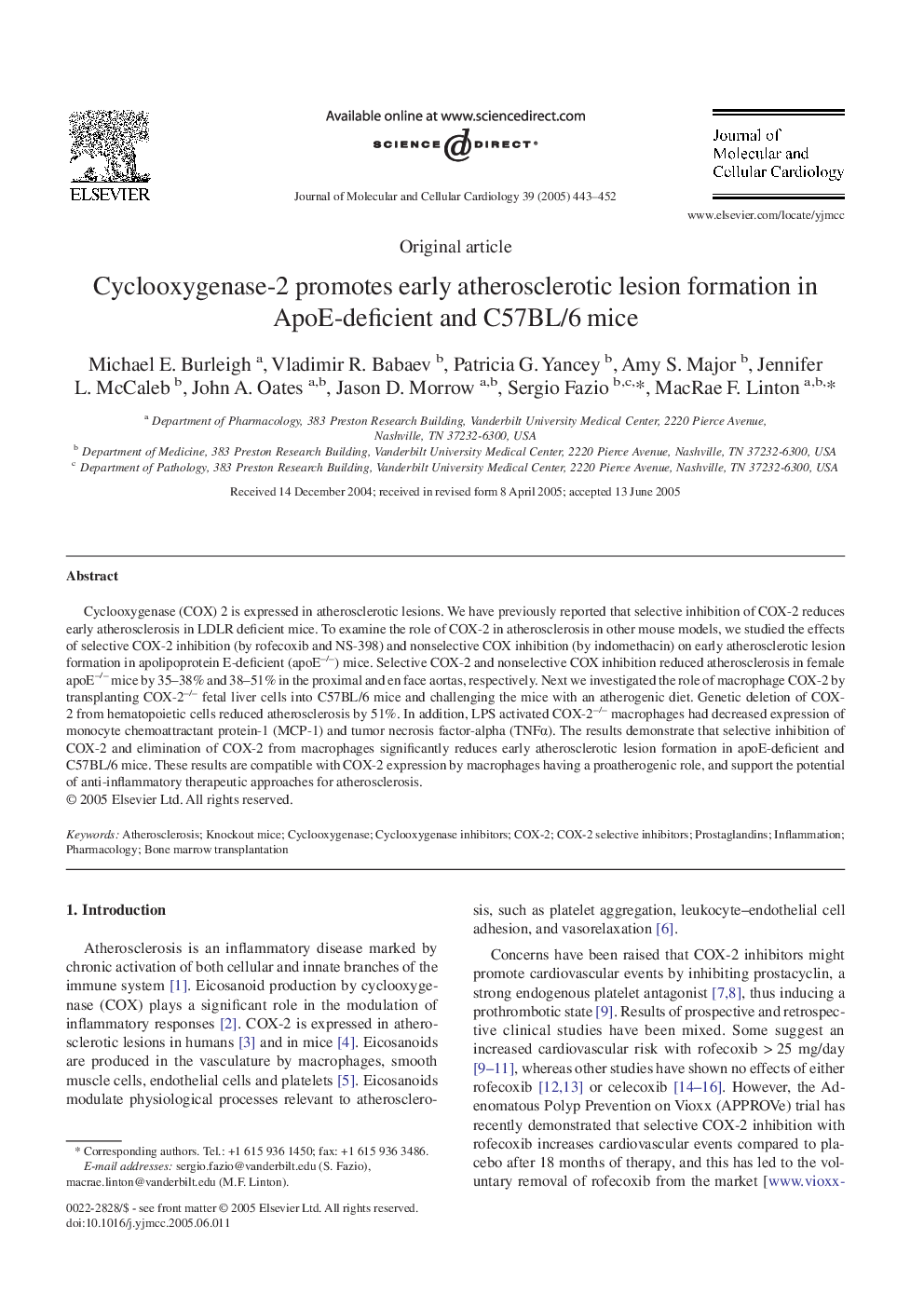| Article ID | Journal | Published Year | Pages | File Type |
|---|---|---|---|---|
| 10954464 | Journal of Molecular and Cellular Cardiology | 2005 | 10 Pages |
Abstract
Cyclooxygenase (COX) 2 is expressed in atherosclerotic lesions. We have previously reported that selective inhibition of COX-2 reduces early atherosclerosis in LDLR deficient mice. To examine the role of COX-2 in atherosclerosis in other mouse models, we studied the effects of selective COX-2 inhibition (by rofecoxib and NS-398) and nonselective COX inhibition (by indomethacin) on early atherosclerotic lesion formation in apolipoprotein E-deficient (apoE-/-) mice. Selective COX-2 and nonselective COX inhibition reduced atherosclerosis in female apoE-/- mice by 35-38% and 38-51% in the proximal and en face aortas, respectively. Next we investigated the role of macrophage COX-2 by transplanting COX-2-/- fetal liver cells into C57BL/6 mice and challenging the mice with an atherogenic diet. Genetic deletion of COX-2 from hematopoietic cells reduced atherosclerosis by 51%. In addition, LPS activated COX-2-/- macrophages had decreased expression of monocyte chemoattractant protein-1 (MCP-1) and tumor necrosis factor-alpha (TNFα). The results demonstrate that selective inhibition of COX-2 and elimination of COX-2 from macrophages significantly reduces early atherosclerotic lesion formation in apoE-deficient and C57BL/6 mice. These results are compatible with COX-2 expression by macrophages having a proatherogenic role, and support the potential of anti-inflammatory therapeutic approaches for atherosclerosis.
Keywords
Related Topics
Life Sciences
Biochemistry, Genetics and Molecular Biology
Cell Biology
Authors
Michael E. Burleigh, Vladimir R. Babaev, Patricia G. Yancey, Amy S. Major, Jennifer L. McCaleb, John A. Oates, Jason D. Morrow, Sergio Fazio, MacRae F. Linton,
